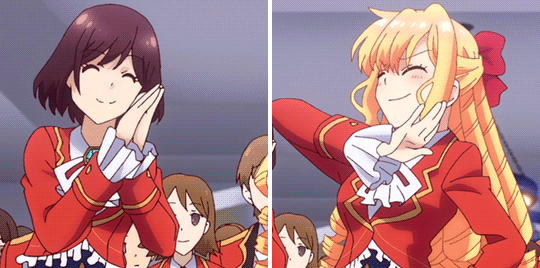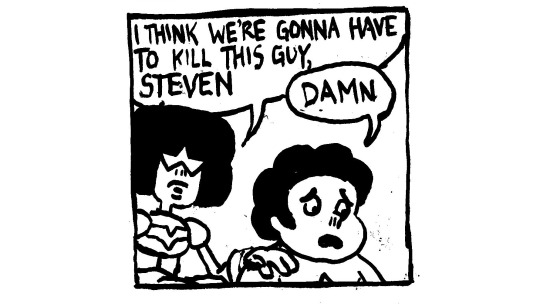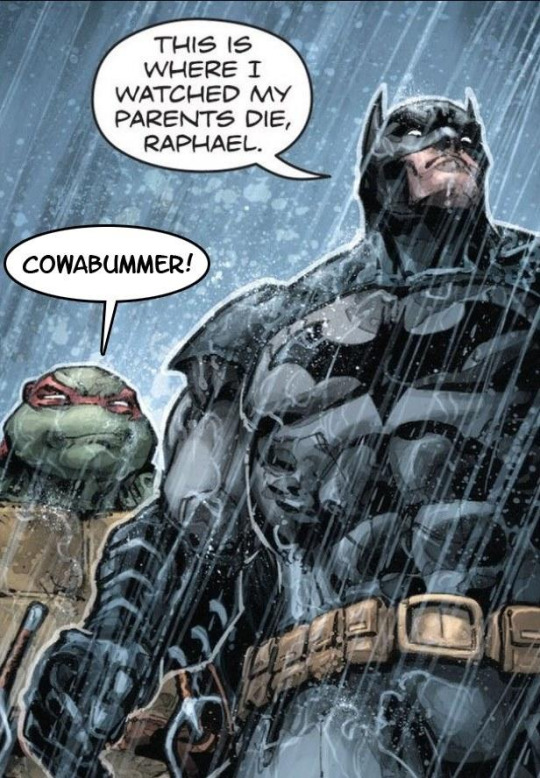#the kuleshov effect
Text

311 notes
·
View notes
Text

The Kuleshov effect featuring the expressionless face of Ivan Mosjoukine.
The way these shots are placed makes/implies different emotions.
#film#kuleshov effect#filmmaking#1920s#lev kuleshov#black and white#art#ivan mosjoukine#alfred hitchcock#photomontage#vintage#movies
19 notes
·
View notes
Quote
The Kuleshov effect is a film editing (montage) effect demonstrated by Russian film-maker Lev Kuleshov in the 1910s and 1920s. It is a mental phenomenon by which viewers derive more meaning from the interaction of two sequential shots than from a single shot in isolation.
Wikipedia
63 notes
·
View notes
Text
So there's this study that was done in the early 1920s (that was shown to me during two separate "film editing 101" courses) called the "Kuleshov effect."
The experiment was simple, and rather than trying to explain what it was, I'll just link a modern remake below, it's only a minute.
youtube
The actor has an expressionless face.
But depending on what we're shown once we cut away - be it a kid in a coffin, a woman on a sofa or a gourmet meal - we, as viewers, will project our own emotional reactions to the sequence of images, and the actor's impassive face.
In the absence of context, we create it ourselves by hanging on to what little information we have to then form a narrative.
In the Prequels, we either aren't shown or aren't shown in an emotionally-satisfying way:
How the Jedi teach all younglings to love without becoming attached.
How the Jedi's culture works.
What their status is, in the grand scheme of the Republic (not very high, and they're powerless to change it).
The Jedi's day-to-day, mediating between planetary leaders, helping them find compromise.
The Jedi's various interactions with Anakin.
The Jedi having fun, laughing, eating lunch, being shown in a normal, humanized light.
We know that most of this stuff is happening because GL says so, but the Prequels aren't supposed to be their films... so he only shows just enough of the Jedi Order to serve his stories of how Anakin and the Republic's gave in to their greed and fear and became Vader and the Empire.
AKA, the absent context, the blank expression on the actor's face.
So an audience that wanted to know more about the above-listed items but instead got a whole lot of "politics" talk will either reject the movies entirely out of disappointment, or attempt to engage with the material, in which case they'll go:
"The Jedi forbid love, that's what their whole culture is all about, repressing emotions, they can do more but can't, they always mistreated Anakin and were trying to purge themselves of all humanity in service of logic and the greater good."
AKA, the projection, like with the Kuleshov test.
That's not what the films say, nor is it the narrative intent.
But in the absence of context explicitly disproving any of this in an emotionally-satisfying way, the audience won't help but project their own impression of the Jedi ("holier than thou, hypocritical assholes" - an opinion formed because the Jedi were not developed or humanized enough on-screen) onto the narrative.
And there's only so much legwork Lucas' commentary, comics, books and TCW can do.
68 notes
·
View notes
Text




#thecupsmith#thecupsmith original#thecupsmith meme#meme#su#steven universe#batman#teenage mutant ninja turtles#bruce wayne#batman's parents#tmnt#tmnt raphael#garnet#garnet su#i think we're gonna have to kill this guy#This is where I watched my parents died#kuleshov effect#wikipedia
10 notes
·
View notes
Note
omg thank u for introducing me to the term kuleshov effect, that is my favorite aspect of fan edits it makes me go insane
it's so fucking cool, i was actually gonna make a video essay for a final project (before i realized that i don't know how to use a video editor + other problems befouled me) comparing two movies illustrating the connections and the contrasts i was making using the kuleshov effect, which would have pretty much just straightup been an amv using songs from one of the movies.
it's part of why a good gifset is one of my favorite kinds of fandom meta - clips from x episode paired with clips from y later episode, etc - like !!!!! you're making a connection and holding it up for me to look at directly so i can then make that connection myself purely through the juxtaposition!!!!!!!! that's so cool!!!!!!!!
like, look at this
you see what i'm saying??? the meaning comes from the interraction of the paired gifs/lines
or this one
which does like, angle or lighting comparison in addition to the contrast in emotion - shot comparison! match shots! et cetera!
like, the meaning here isn't coming from the caption, i don't see that until later, it's coming from seeing these visuals & dialogue juxtaposed and interpreting something from the decision to pair them. that's video essay
but like to get back to videos and amvs and the kuleshov effect and soviet montage in general - look at this supernatural amv. i've never seen supernatural but this is one of my favorite songs by the mountain goats, and there are lines in it that were put in a completely new perspective for me by watching this amv and seeing what shots the editor put under which lines
soviet montage is a style that developed pretty much in direct response to western/hollywood continuity editing, and specifically in response to the film birth of a nation, which was interesting to the soviet filmmakers in the way that they saw the style of filmmaking aided the film in selling the story of the KKK to the american audience
continuity editing stylistically wants to be noticed as little as possible, and guide you along the viewing of the movie, blurring the lines between your reality and the reality of the film (the idea of the suspension of disbelief) through things that mimic the real life experience of moving throug the world - shot-to-shot things like showing the exterior of the building and then the interior, keeping the camera within the same 180 degrees in a single scene so the people you're filming aren't suddenly on different sides of the camera (the viewer); and scene-to-scene things like having events occur chronologically (and if not, having a clear indication of flashback or flash forward as per filmmaking convention)
the soviet filmmakers saw this as like, some capitalist propaganda bullshit because it encouraged you to take in these ideas without necessarily thinking or critically examining them, and so it was very easy to make the KKK the heroes by just building a triumphant narrative around them, and how that narrative is shown to the viewer depends on how it's edited
and so montage editing, which is rising out of the same school of filmmaking as the kuleshov effect, is in direct response to that, to try and find a style of editing that makes the viewer pay attention to the techniques and to the fact that they're watching a film, keeps their brain engaged, and has them draw their own conclusions from what they're shown rather than being gently handed the conclusions by the film. so it's a style that is built on inviting thought and critique, and therefore a pretty natural style for expressing audiovisual critique and analysis
(amvs also have their roots in this style bc soviet filmmakers were often working with recutting american films rather than filming their own due to lack of funds for purchasing film. which is pretty cool)
if you wanna check out a cool classic example of soviet montage editing, vertov's man with a movie camera (1hr) is really fun, kind of a "day in the life" but also a display of different effects you can get by using a film camera in different ways, bit of stop motion, etc
(vertov is also a really interesting, he coined the idea of kino-eye, which is about the way that the camera looks at the world and how that's different from how a human eye looks at the world, and also, the way the world reacts or changes in response to being looked at by the camera. which is Pretty Relevant Right Now I'd Say! glares at tiktok. glares at surveilence state. anyway you might wanna check that out too it's a bit tangental to the topic but still relevant in terms of the idea of film as unique medium which can be used to express ideas differently than the written word)
#asks#film#soviet montage editing#kuleshov effect#vertov#amvs#amv#half of this is what i remember from a lecture in my film class so don't like quote me but also do know that i have a pretty good memory
11 notes
·
View notes
Text
SARIN // JIGAR
[KULESHOV EFFECT EP, 2018]
3 notes
·
View notes
Text
also. my final squad is gale astarion lae'zel. and let me tell you. with the way this playthrough has played out, including the romances. gale is not over her. he's not over her he's not over her he's not over her somebody kill me
#all of this depends ENTIRELY on the context of this one playthrough and the order in which things happened#but getting the 'i think it's time to reconsider the orb' scene over getting ANYTHING with astarion#has created a kuleshov effect so goddamn powerful it blew my head clean off i think#ough#ouuuuughhhhh
3 notes
·
View notes
Text
Not me watching the 1931 Dracula film because I'm in my once-every-6-months faze of remembering I actually love vampires.
1 note
·
View note
Text
Also I love the implication that Katia saw her father (and he saw her even if he didn't know it was her, specifically, on the helicopter) and that's what prompted her to steer a helicopter through a forty-story window
#hitman: agent 47#katia van dees#dr. litvenko#that's the power of montage#srsly it's a whole thing called the kuleshov effect#check it out
1 note
·
View note
Text
That scene where bel and amuro first make out and are like "lol maybe we should forget abt getting kamille and char back into space hehe, why focus on the mission when we can focus on us~" HARD CUT to char strutting in, fists clenched asking her to leave....iconic
#the way the scene is set is insane too#amuro follows bel out of the elevator#she challenges him emotionally#then they flirt and make out#then once char breaks it up amuro follows him back into the elevator going the opposite direction than last time#they have an emotionally loaded conversation. end scene 👀🫡👁️#abs blabs#am i reading too much into it or is it a masterpiece of male yuri? (kuleshov effect n narrative ellipsis)#why not both
0 notes
Text

It's crazy how Dungeon Meshi's manga can feel more cinematic and emotional than the anime to me, even when they're practically the same. Compared to the anime, this moment is such a heartbreaking gut-drop. The way Kui uses negative space and flat compositions to create a sense of horrific stillness is so key.
The way the text (Senshi's monologue) is sequestered to an empty corner of a panel or huddled away from the edge of its text box is not only a great way of showing Senshi's headspace (fearful, isolated, dissociating), but creates a visual representation of pause, as if you hold your breathe after each line. The first panel puts us directly in Senshi's perspective too (compared to in the anime, which puts us as an outside observer over Senshi's shoulder). The detail of the door and bricks so effectively implies that he stared at it for so long, waiting and hoping, that its image is burned in his memory. The wood grain, the brick arch, the number of rivets. The lack of dialogue in the second panel shows a moment of realization too –– "he's dead" (also a great example of the Kuleshov effect). And it's that pause that creates a beat and sets a great rhythm to his headspace, like a music rest: "He never came back." (oh god.) "I'm all alone." Finally, the third panel's negative space, cropping Senshi, shows how truly alone he feels. Without his family, the world ceases to exists. Under shock, he traps himself in a 1-foot radius, too scared to even perceive a world outside its boundaries; a world that can hurt him, kill him, make him disappear with it. There is only his body, the stone beneath his feet and against his back, his thoughts, and that awful bowl of soup.
Even though they're a series of flat images, there's an implicit reading of silence in Senshi's realization and horror. Kui influences your experience to slow down and take your time.
Compare this to the anime, which fills every shot with dialogue. The pacing is fast; we never get to sit in silence like we do with the manga. The horizontal frame allowed the boarders to add Senshi, turning the composition into an over-the-shoulder shot, which takes us out of Senshi's POV. They also added a zoom-out in shot one, which adds unnecessary energy to a very somber scene. The tightening on Senshi as a close-up reaction shot also dulls the moment. In the original panel, Senshi stares ahead at the empty space to his left as a shadow surrounds his mind. It not only shows how Senshi's senses are dulling and his world is shrinking (setting up panel three), but shows how terrified Senshi is of what's in front of him, how the air itself becomes pitch black and opaque, how Senshi is surrendering himself to fear. The pacing is understandable and necessary; this episode packed a lot of story content together. It's just a shame because it really (imo) deflated one of the most nauseating moments in Dungeon Meshi.
#dungeon meshi#senshi#analysis#personal#long post#not art#because comics are inherently more abstract and rule-breaky the format thrives off show don't tell#i think trigger is doing a great job overall but they missed the mark on this scene#for me cinematic storytelling will prioritize rhythm; tension; and silence over plot. that's why the manga feels more “cinematic”#if you've been enjoying the anime i cannot recommend also reading the manga enough. it's a completely different experience with much more#subtext and emotion to draw from
3K notes
·
View notes
Text
nothing, and I do mean nothing, is funnier than your ex becoming a sort of tumblr-cryptid that sneaks onto posts to say something suspect and have his URL incredulously reacted to.
0 notes
Text

kot blini's facial expression is so inscrutable. its like the mona lisa, or the famous kuleshov effect face. what is he feeling. pride...?
488 notes
·
View notes
Text
Starting a film studio that exclusively makes porn but we never show two people together in screen at once. We have to imply everything using the kuleshov effect
422 notes
·
View notes
Note

the kuleshov effect
416 notes
·
View notes